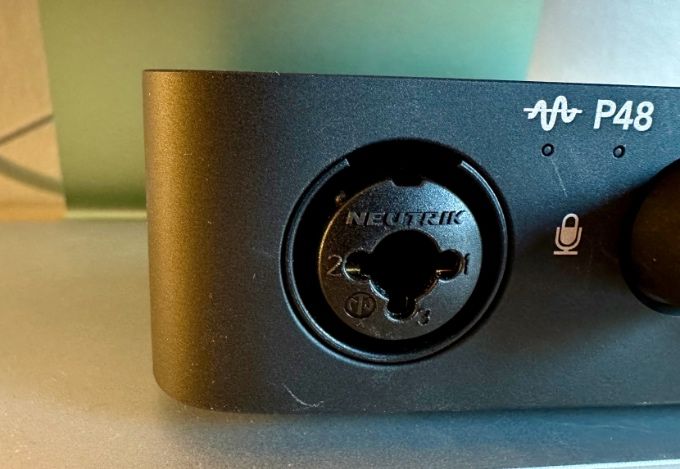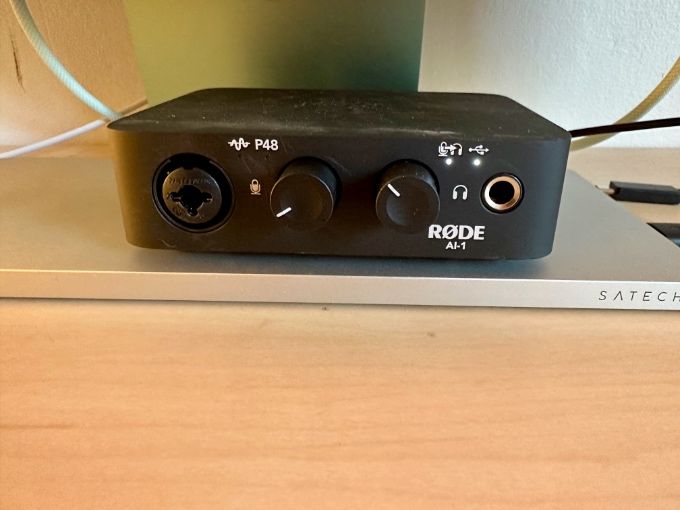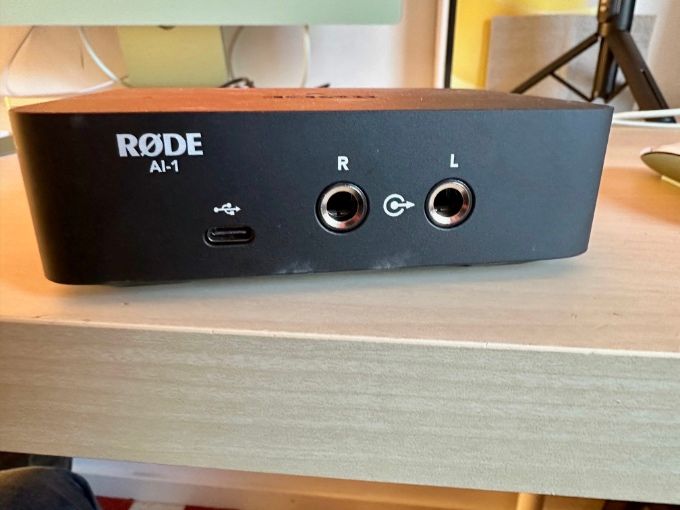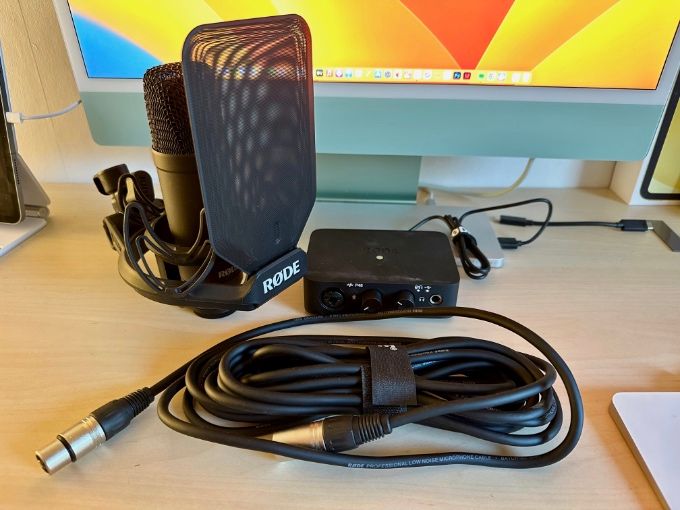Tested product: Rødes NT1 + AI-1 Studio kit
Taken: SEK 3,390 at Amazon Sweden
When you want to record your own podcast or record music on your computer, at best you need an external microphone, but what many people forget is that it will be much better with an external sound card. We have tested the Rødes NT1 + AI-1 Studiokit, a package that contains both microphone and sound card.
Rating 4.5 out of 5
Opinion
Positive
- Simple to use
- Good quality for the money
- Plug and play
Negative
- Only one input for mic or instrument
- It attracts dirt
When we unpack the package, we find a condenser microphone, a sound card in the form of a small black plastic box and a cord. When we lift the plastic, we find a long xlr cable, which immediately gives a plus in the edge.
Why then, you might wonder. Well, an xlr cable is significantly less sensitive to interference and has a better signal-to-noise ratio in the signal and sound.
The installation itself is very simple. Plug in the sound card via USB and it’s done. At least if you’re using a Mac. When you want to use Røde as an input source, however, you need to go into Settings and other sources under Sound. But it is very simple.
Combo jack for mic and guitar
The sound card has a Neutrik combi-jack, to which you can connect both xlr and 6.3 mm connectors, but not at the same time. There is also a headphone input which also requires a larger connector. If your headphones only have a 3.5mm jack, you’ll need one adapter which costs a few tens. By using the built-in headphone input, you avoid possible lag that can occur when you record, for example, music.

Next to the inputs are two knobs that also have button functions. Pressing one toggles phantom input to the microphone on or off. The second activates the headphone input on the sound card (if you don’t want to connect to the computer’s headphone input). The left knob controls how much gain you want and the other volume in the headphones. You therefore do not need to have a degree in rocket technology to use the card. The sound card has 24 bit resolution and 44.1, 48, 88.2 and 96 kHz sample rate.

On the back is a usb c port and two line outputs if you want to connect a couple of speakers.

Should we find anything negative to say, it is that the sound card absorbs dirt and that there is only one input.
The microphone is a sturdy story that picks up sound in the 20Hz ~ 20kHz range and has a signal-to-noise ratio of 90 dB, which puts it at the same level as a CD player, if anyone remembers them. The higher the value, the better. It also comes with a stand with a built-in filter that can be attached to a stand. The microphone is connected to the sound card via the xlr input.
Super easy to get started
Without not going at all technical specificationsbecause there are lots of more or less comprehensible numbers to mention, it is easier to talk about the actual result and usage.
As I’ve already mentioned, getting started with this package is incredibly easy. How will the result be? Well, you can listen to our latest podcast episode, where I am currently using it is the kit, and compare it to a previous one where I use a usb connected microphone and hear the difference for myself. It is noticeably better with Røde.
The Rode NT1 + AI-1 Studio kit also works great for those who want to record on the computer. Plug the electric guitar into the combi-jack and start Garageband or Logic. When the program starts, you will see a window where Røde is preselected. Then just record. Simple and fun!

We compared the recording with the Irig, model simpler and from 2013 it must be said, and it sounded much better. In particular, a lot of noise and distortion was eliminated from the guitar when I used the “Big hair harmonics” amplifier.
A lot of technology for the money
In terms of price, there is not much to say either. You get a great package at a great price that allows you to start creating music or making your own podcast. It’s also perfect for those who want to live stream on Twitch or whatever it may be.
The Rode NT1 + AI-1 Studio kit is a starter kit for those who want better sound, regardless of whether it’s about voice or recorded music. And it is also a package we can warmly recommend.
Specifications
Manufacturer: Red
Tested: January 2023
Frequency range: 20 Hz-20 kHz
Recording: 44.1, 48, 88.2 and 96 kHz, 24-bit
Signal-to-noise ratio: 90 dB
Microphone connection: Xlr
Connection: Usb a till usb-c
Size: 88 x 124 x 38 mm
Taken: SEK 3,390 at Amazon Sweden


